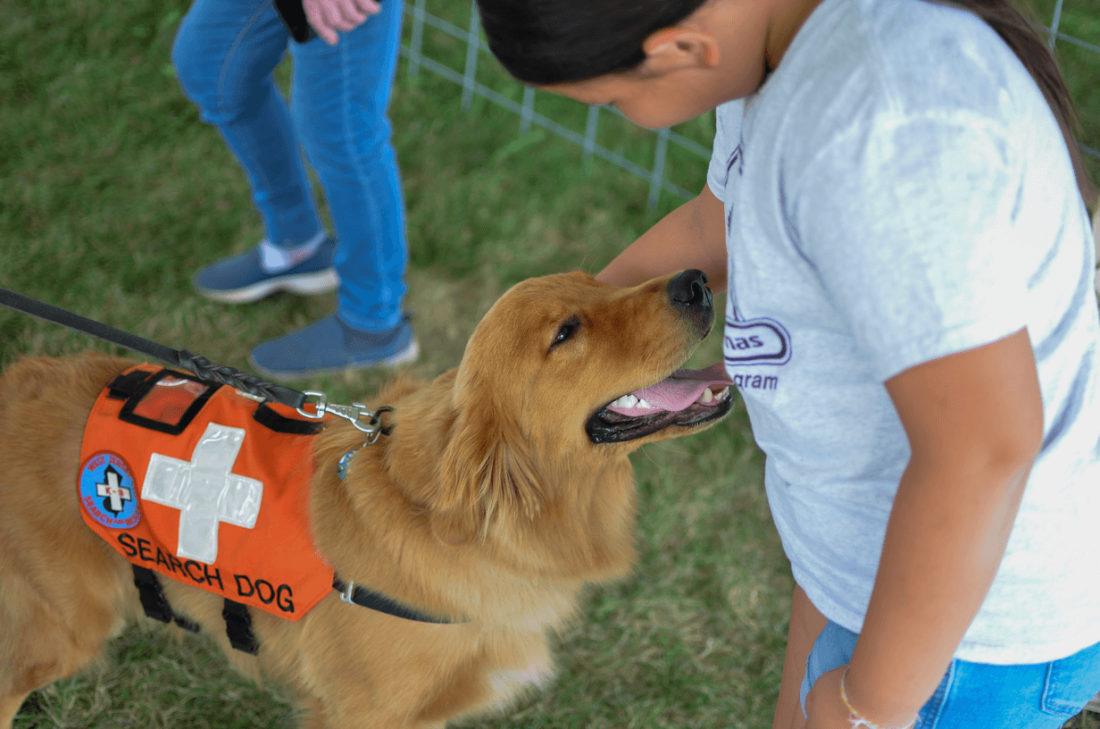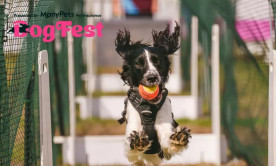Search and rescue dogs are specially trained canines that find survivors after disasters or locate people lost in the wilderness. But how are they trained? And how do they manage to find people?
How search and rescue dogs find people
Dogs have an excellent sense of smell due to the extremely high number of olfactory receptors in their noses – the neurons that detect odours. Humans have roughly six million of these receptors but dogs have up to 300 million, nearly 5000% more. A dog’s nose also has the ability to separate odours, allowing them to identify a specific smell amongst a range of others.
This keen sense of smell can be honed through training to identify human scent and breath. This is how search and rescue (SAR) dogs are able to locate earthquake survivors under rumble. They are also trained to follow ‘ground disturbances’ where they follow footprints and scent traces which are how they’re able to track missing people in the wild.
How search and rescue dogs are trained
Search and rescue dogs are normally trained when they’re puppies and training can take two to three years. Although it’s possible to train civilian dogs to search and rescue, trainers prefer to start when they are still young in order to enforce the skills needed.
When they are puppies, handlers identify vital traits that would lend themselves to the training process. SAR dogs need to be obedient, disciplined, have a friendly nature, be comfortable around strangers and new places, and have a strong desire to please.
Once these traits are identified in a canine candidate, the handlers are able to begin search and rescue training where the dogs are taught to:
- Ignore all distractions when tracking (like other animals)
- Identify human scent and breath
- Alert its handler to their location
- Recall and find – where the dog is able to lead its handler to a location
Reinforcement training plays an important role in the process. Just like all forms of training a dog, a reward system is implemented whenever the dog completes a task quickly and successfully. The
Specialised training
In general dogs need around 600 hours of training before they are field ready, but SAR dogs are often trained in specific areas to ensure they are well honed to a certain task.
Countries more prone to earthquakes will train their SAR units to navigate rubble and work in tight, cramped spaces of collapsed buildings. Colder climate countries will specially train their rescue canines to find people in avalanches and in deep snow.
Here in the UK, Mountain Rescue Search Dogs England train their dogs for mountain rescue as well as finding missing people in remote places. You can find more about how they train their dogs here.
Types of breed
All dogs have an excellent sense of smell making any breed technically viable to be search and rescue trained, but some are better suited to the job than others. As most search and rescue work involves trekking across miles of terrain or manoeuvring through rubble, medium and larger breeds are preferred as they generally have stronger legs, better stamina, and are quicker.
Common search and rescue breeds are:
- German Shepherds
- Labrador Retrievers
- Golden Retrievers
- Bloodhounds
- Border Collies
- Belgian Shepherds
UK search and rescue dog charities
It can cost around £35,000 per year to train and keep rescue dogs and often these are volunteer organisations that rely on donations.
UK based search and rescue dog charities include:
- National Search And Rescue Dog Association (NSARDA) - https://nsarda.org.uk/
- Mountain Rescue Search Dogs England - https://mountainrescuesearchdogsengland.org.uk/
- Search and Rescue London - https://www.lonsar.com/
Header photo by Joshua Jen on Unsplash





